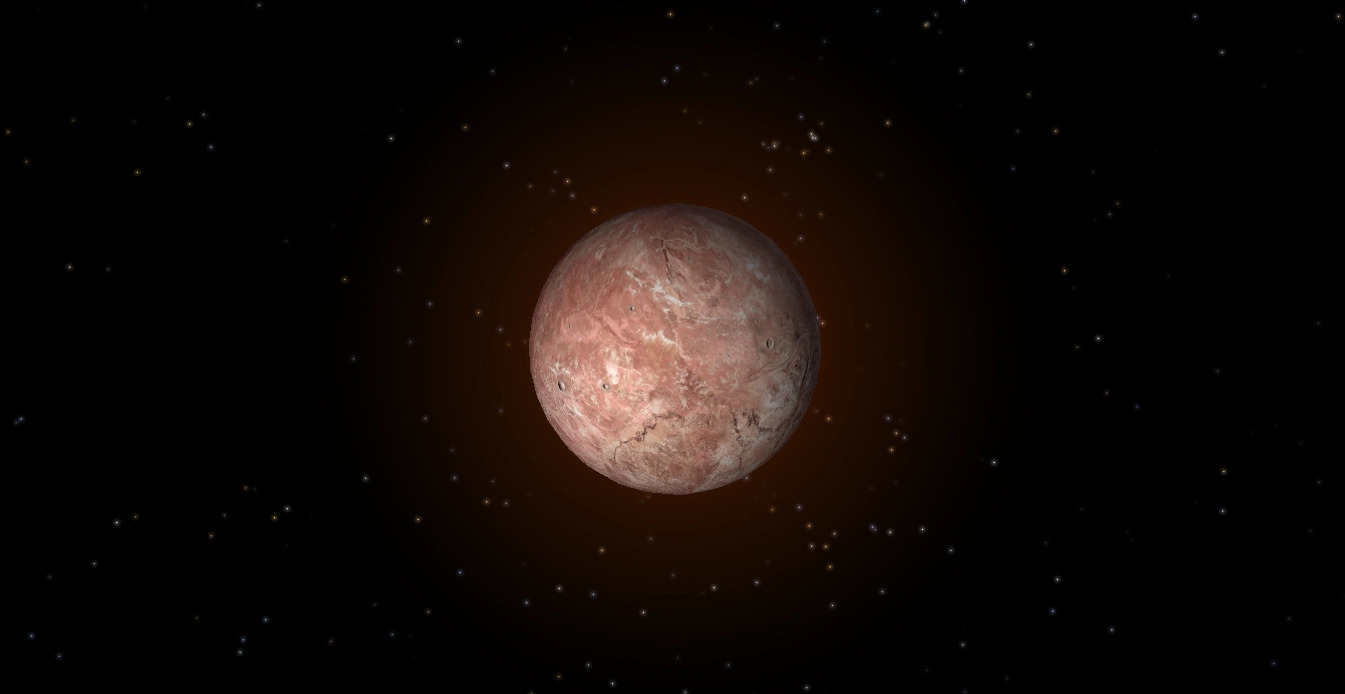
Ever wondered about the mysteries that twinkle beyond our blue sky? Well, let's zoom past the moon, dodge asteroids, and take a cosmic leap to Makemake – one of the most intriguing bodies in our solar system. Makemake might not be as famous as Mars or as flashy as Saturn, but this dwarf planet holds secrets that could rival any celestial heavyweight. Nestled in the Kuiper Belt, this icy world was named after a deity from the Rapa Nui mythology of Easter Island, hinting at its mysterious allure. Why does Makemake capture the imagination of astronomers and space enthusiasts alike? From its discovery to its place in our cosmic neighborhood, we're about to uncover 35 great facts that shine a light on this distant world. Ready to get starstruck? Let's blast off into the unknown and discover what makes Makemake a standout character in the vast expanse of space.
Key Takeaways:
- Makemake, a dwarf planet in the outer solar system, offers insights into the early solar system. Its unique characteristics and potential for future exploration inspire curiosity and scientific discovery.
- The discovery of Makemake and its moon, MK 2, sparks interest in space science and global collaboration. Studying distant objects like Makemake drives technological innovation and fosters a sense of shared purpose in understanding the universe.
What is Makemake?
Makemake, named after the creator deity of the Rapa Nui people of Easter Island, is a dwarf planet in the outer solar system. Discovered in 2005, it's one of the largest known objects in the Kuiper Belt, a region filled with icy bodies and dwarf planets beyond Neptune's orbit. Makemake lacks a significant atmosphere, unlike Pluto, and its surface is covered in frozen methane and possibly nitrogen ice.
Key Characteristics of Makemake
-
Size and Orbit: Makemake has a diameter of about 1,430 kilometers, making it the third-largest dwarf planet discovered in the Kuiper Belt. It orbits the Sun once every 305 years, at a distance that ranges from 38.5 to 52.5 astronomical units (AU).
-
Surface and Composition: Scientists believe Makemake's reddish color comes from the presence of tholins, complex organic molecules created when cosmic rays interact with methane.
-
Discovery: Makemake was discovered on March 31, 2005, by a team led by Mike Brown at the Palomar Observatory in California. Its discovery was part of a search for objects beyond Neptune.
Exploration and Observation
-
Telescopic Observations: Despite its distance, Makemake has been studied extensively through telescopes. Observations have helped scientists determine its size, shape, and some surface properties.
-
No Moons: For a long time, Makemake was thought to be without moons. However, in 2016, a small moon, nicknamed MK 2, was discovered orbiting the dwarf planet, challenging previous assumptions.
Makemake's Place in the Solar System
-
Classification: Makemake is classified as a dwarf planet by the International Astronomical Union (IAU). This classification places it in the same category as Pluto, Haumea, and Eris.
-
Kuiper Belt Object: As a member of the Kuiper Belt, Makemake contributes to our understanding of the early solar system. The Kuiper Belt is believed to be remnants from the solar system's formation.
The Atmosphere of Makemake
-
Lack of a Substantial Atmosphere: Unlike Pluto, Makemake does not have a significant atmosphere. This was confirmed during a stellar occultation in 2011, when Makemake passed in front of a star, and no atmospheric refraction was observed.
-
Temperature: With surface temperatures estimated to be around -240°C (-400°F), Makemake is one of the coldest places in the solar system.
Cultural Impact and Naming
-
Naming: Makemake was named after the chief god of the Rapa Nui mythology, reflecting the object's discovery by a team based in California, USA, and its connection to Pacific Islander culture.
-
Influence on Astronomy: The discovery of Makemake, along with other distant objects, played a key role in the reclassification of Pluto as a dwarf planet in 2006. This sparked widespread debate and interest in planetary science.
Future Missions and Studies
-
Potential Exploration: While no missions to Makemake are currently planned, its intriguing characteristics make it a potential target for future exploration. Scientists are particularly interested in studying its surface composition and the small moon orbiting it.
-
Scientific Interest: Makemake continues to be a subject of interest for astronomers studying the outer solar system. Its isolated environment and unique features offer clues about the processes that shaped the early solar system.
Understanding Makemake's Moon
-
MK 2: The discovery of Makemake's moon, MK 2, was significant because it allows scientists to learn more about Makemake's mass and density. Observing the moon's orbit can provide valuable data on the dwarf planet's gravitational field.
-
Characteristics of MK 2: Little is known about MK 2, but its discovery opens up new avenues for research. It's believed to be about 160 kilometers in diameter, based on brightness observations.
The Future of Makemake Research
-
Advancements in Technology: As telescopic technology advances, astronomers hope to gain more detailed insights into Makemake and its moon. These future observations could reveal more about the dwarf planet's surface and potential atmosphere.
-
Collaborative Research: International collaborations among astronomers are crucial for pooling resources and expertise. Such partnerships could accelerate our understanding of Makemake and other distant objects in our solar system.
-
Educational Impact: Makemake's story, from its discovery to ongoing research, serves as an inspiring example for educational programs. It highlights the importance of curiosity and exploration in science.
-
Environmental Comparisons: Researchers often compare Makemake to other icy bodies in the solar system, such as Pluto and Eris. These comparisons help scientists understand the diversity and similarities among objects in the Kuiper Belt.
-
Role in Planetary Classification: Makemake's classification as a dwarf planet has contributed to discussions about what constitutes a planet. This ongoing debate encourages critical thinking and engagement within the astronomical community.
-
Future Discoveries: The continued study of Makemake could lead to new discoveries about the Kuiper Belt and beyond. Each finding helps piece together the vast puzzle of our solar system's history and composition.
-
Inspiration for Exploration: Makemake, with its mysterious surface and distant orbit, inspires both professional astronomers and amateur stargazers to look beyond our immediate neighborhood for answers about the universe.
-
Contribution to Space Science: Understanding Makemake and similar objects expands our knowledge of space science, offering insights into the formation of planets and the dynamics of the solar system.
-
Public Interest: The intrigue surrounding Makemake and other celestial bodies fosters public interest in space exploration and science education, highlighting the importance of continued investment in research.
-
Challenges in Observation: Observing distant objects like Makemake presents significant challenges due to their size, distance, and faintness. Overcoming these challenges requires innovative techniques and technologies.
-
Potential for Life: While the extreme cold and lack of atmosphere make Makemake an unlikely place for life as we know it, studying such environments helps define the conditions necessary for life elsewhere in the universe.
-
Interdisciplinary Research: The study of Makemake benefits from an interdisciplinary approach, combining astronomy, geology, chemistry, and physics. This holistic view is essential for understanding complex celestial bodies.
-
Cultural Significance: Makemake's name and discovery story add cultural depth to our understanding of the cosmos, reminding us of the diverse perspectives and histories that contribute to science.
-
Impact on Future Generations: The ongoing exploration of Makemake and the Kuiper Belt will likely inspire future generations of scientists, encouraging them to pursue careers in research and exploration.
-
Global Collaboration: The quest to learn more about Makemake exemplifies the importance of global collaboration in science. Sharing data and insights across borders accelerates progress and fosters a sense of shared purpose.
-
Technological Innovation: Studying distant objects like Makemake drives technological innovation, as scientists develop new instruments and methods for observing the far reaches of our solar system.
-
Environmental Insights: By understanding the extreme conditions on Makemake, scientists can gain insights into Earth's own environmental systems and the potential for changes over time.
-
Historical Context: Makemake's discovery and study are part of a long history of human curiosity about the heavens. This context enriches our appreciation for the efforts and achievements of astronomers past and present.
-
Astrophysical Models: Data from Makemake helps refine astrophysical models, improving our understanding of celestial mechanics, composition, and the evolution of the solar system.
-
Community Engagement: The fascination with Makemake and similar discoveries encourages community engagement with science, through public talks, educational programs, and social media discussions.
A Glimpse Beyond Our Blue Home
We've journeyed through the cosmos to uncover the mysteries of Makemake, one of the most intriguing bodies in our solar system. This distant world, named after the creator deity of the Rapa Nui, offers a unique window into the complex tapestry of our universe. With its extreme cold, lack of atmosphere, and solitary moon, Makemake challenges our understanding of what it means to be a dwarf planet. As technology advances, so too will our knowledge of these distant objects. Each discovery peels back a layer, revealing more about our place in the cosmos. So, keep looking up; the secrets of Makemake and countless other celestial bodies await to tell their stories, broadening our horizons far beyond the confines of Earth.
Frequently Asked Questions
Was this page helpful?
Our commitment to delivering trustworthy and engaging content is at the heart of what we do. Each fact on our site is contributed by real users like you, bringing a wealth of diverse insights and information. To ensure the highest standards of accuracy and reliability, our dedicated editors meticulously review each submission. This process guarantees that the facts we share are not only fascinating but also credible. Trust in our commitment to quality and authenticity as you explore and learn with us.


